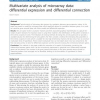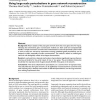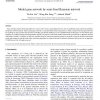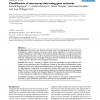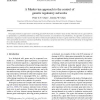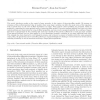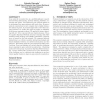130
Voted
BMCBI
2011
14 years 7 months ago
2011
Background: Typical analysis of microarray data ignores the correlation between gene expression values. In this paper we present a model for microarray data which specifically all...
116
Voted
BMCBI
2005
15 years 21 days ago
2005
Background: Recent analysis of the yeast gene network shows that most genes have few inputs, indicating that enumerative gene reconstruction methods are both useful and computatio...
108
Voted
JCB
2006
15 years 23 days ago
2006
This paper presents a discrete-event approach to synthesis of transcription control for a class of (computational) gene networks. Given a set of genes and protein-gene and/or prote...
105
Voted
ESWA
2006
15 years 24 days ago
2006
Gene networks describe functional pathways in a given cell or tissue, representing processes such as metabolism, gene expression regulation, and protein or RNA transport. Thus, le...
107
Voted
BMCBI
2007
15 years 24 days ago
2007
Background: Microarrays have become extremely useful for analysing genetic phenomena, but establishing a relation between microarray analysis results (typically a list of genes) a...
147
Voted
BMCBI
2007
15 years 27 days ago
2007
Background: The underlying goal of microarray experiments is to identify gene expression patterns across different experimental conditions. Genes that are contained in a particula...
117
click to vote
BIOSYSTEMS
2007
15 years 27 days ago
2007
This paper presents an approach for controlling gene networks based on a Markov chain model, where the state of a gene network is represented as a probability distribution, while ...
117
click to vote
AUTOMATICA
2008
15 years 28 days ago
2008
This article introduces results on the control of gene networks, in the context of piecewise-affine models. We propose an extension of this well-documented class of models, where ...
124
Voted
ICASSP
2010
IEEE
15 years 1 months ago
2010
IEEE
In order to structure a gene network, a score-based approach is often used. A score-based approach, however, is problematic because by assuming a probability distribution, one is ...
118
Voted
ISDA
2008
IEEE
15 years 7 months ago
2008
IEEE
Gene network reconstruction is a multidisciplinary research area involving data mining, machine learning, statistics, ontologies and others. Reconstructed gene network allows us t...
